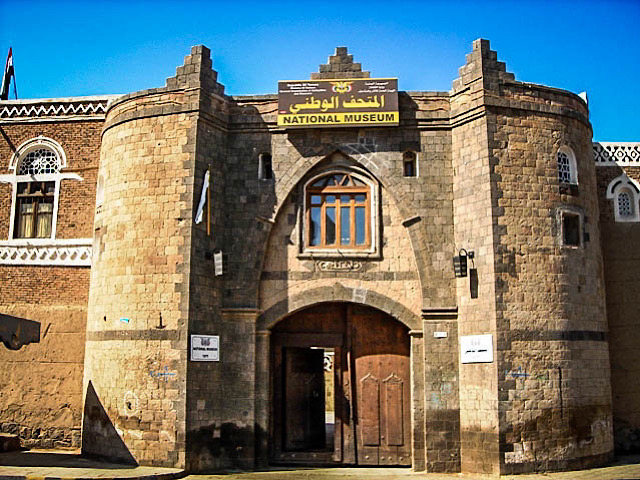The National Museum in Sana‘a reopens, despite war and looting
On the opening day, 18 May, three different exhibitions were on display, attracting locals and people from neighbouring cities and towns, as well as students and arts lovers. After years of brutal war and perhaps one million stolen artefacts, the reopening is an attempt to bring the museum back to its former glory.
Sana’a (AsiaNews) – The National Museum of Yemen in Sana'a reopened on 18 May after being closed for a decade because of the country’s still ongoing civil war. As the attempts at mediation to end the hostilities continue, fighting has cooled off.
The official reopening was a welcome change and a rare moment of celebration, especially since it fell on World Museum Day,
For Yemenis, this was a new step towards getting back to normal after many years of suffering, attracting a large number of people and enthusiasts to view ancient glories and artefacts of great historical and cultural value, saved from loss, looting and destruction.
Yemen’s civil war began in September 2014 pitting pro-Iranian Houthi rebels against the country’s Saudi-backed government. After it intensified over the following months, in March 2015, Saudi Arabia intervened, leading a coalition of Arab countries.
Nearly 400,000 people have died in more than eight years of fighting, making it the worst humanitarian crisis in the world according to the UN, compounded by the devastating effects of the COVID-19 pandemic with millions on the brink of starvation and children (11,000 dead) likely to suffer the consequences for decades.
More than three million Yemenis have become internally displaced, mostly surviving in extreme poverty, hunger and epidemics of various kinds, not the least cholera.
The country’s cultural heritage has also paid a price, including the National Museum of Yemen, in Sana'a. Founded in 1971, it was located in the Dar al-Shukr (Palace of Gratefulness) near the Qubbat al-Mutawakkil Mosque dome at Al-Tahreer Square, in the city’s downtown area.
The Museum recently moved to a nearby building, the Dar Al-Sada (Palace of Happiness), with more room to accommodate more artefacts, which numbered more than 30,000 in 2007, symbols of the country’s centuries of history.
The four-storey building, which contains objects that are over 1,000 years old, survived the war, but the world’s indifference has not only allowed the humanitarian situation to get worse, but has favoured the stealing and looting of historical artefacts and made it hard to preserve the remainder.
The once-flourishing tourist sector has suffered too. Now with reopening, the people of Sana'a and neighbouring cities and towns can rediscover the museum’s treasures. Since it reopened, students from schools, university students specialising in history, and families have been visiting daily.
In the past, UNESCO raised concerns over the number of heritage sites and artefacts at risk in Yemen, particularly as many historic buildings have sustained collateral damage during the fighting.
Nevertheless, the reopening marks an important milestone starting with three initial exhibitions. One includes around 800 seized and recovered artefacts (like copper plates, axes, and a sword), the second contains artefacts from Jawf province, while the third displays photographs of smuggled or stolen artefacts.
In the absence of an official estimate of the number of stolen and looted antiquities, unofficial figures suggest that more than a million have been taken from various sites and are either scattered around the country or smuggled abroad. Recovering any of them will be a huge undertaking.
11/08/2017 20:05







.png)










